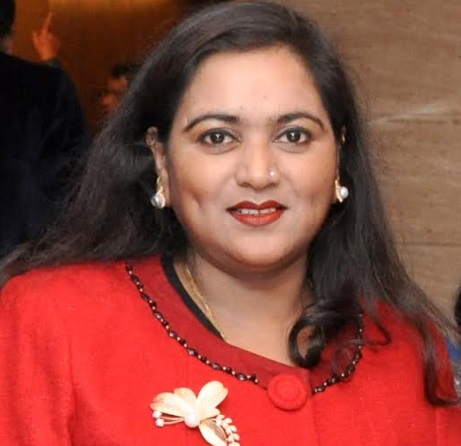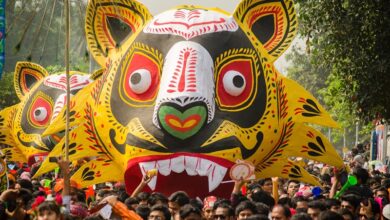Where is job for a non tribal in Shillong ?

Plea to target the non-tribal with a mere excuse!

By Bornali Biswas
Editor in Chief
I am writing this article being one of the non tribal of Shillong born who has faced the same discrimination for job from time after time and has relocated to Kolkata to start my publication. Where is the job for non tribals ? The matters as referred in various journals have been used for your perusal. Since the 1970s, Meghalaya has been raven by inter-ethnic tension that has pitted tribals against non-tribals in the state. Student and youth groups, at the forefront of such agitation, have been demanding special privileges from the government favouring the tribals only.
The non-tribals who had made Shillong their home from the time of British Raj contributed richly to its educational, cultural and intellectual climate; many institutions were established or pioneered by them still exist and continue to enrich people’s lives. And development today Meghalaya enjoys was led by the hard earned effort by so called unwanted non tribals.
The state of Meghalaya was carved out of Assam in 1972. Six years later, an outfit called Khasi Students Union (KSU) emerged in 1978 with the motto Mait Shaphrang Khlur Ka Ri -‘Strive Forward Children of the Soil’.
Children of the Soil, however, excluded all non-Khasis, regardless of how many generations one has been living there for and contributed to the formation of history of Meghalaya for which the world is known for. KSU coined a term for such people, Dkhar – outsiders, who are inferior humans, and hence deserving to be scorned, knocked and thrashed at every opportunity, to be driven out of Meghalaya or even killed. This neoNazi sub-nationalism militates against the character of the Khasis who are peaceful, music-loving and friendly. These outsiders have a history dating back to the 19th century. In 1874, Assam was created as a separate province out of the Bengal Presidency, with the beautiful hill town Shillong as its capital where the major contribution was led by Bengalis.

Being the capital and a beautiful hill town, Shillong attracted lots of them along with the middle class educated people from the adjoining areas – especially the Sylhet district which would ultimately go to East Pakistan.
They found employment in government and private offices, schools and colleges in Shillong and made it their home and contributed to their utmost.
Christian missionaries led by the British set up some of the best schools and colleges in Shillong which grew as a culturally vibrant, intellectually stimulating, cosmopolitan town. The non-tribals, especially Bengalis were recruited for their credentials.
Once the Partition happened and Sylhet ceded to Pakistan, its large Hindu Bengali population was forced to migrate as refugees. They settled mostly in Shillong because of the educational opportunities it offered, and in the Barak Valley of Assam. Shillong still continued to function as the capital of Assam. When during the 1960s, the Bongal kheda or ‘Bengali Chasing’ movement convulsed Assam with widespread violence and riots directed against the Bengalis, Shillong remained as peaceful as ever, as if nothing could blemish its green hills and blue skies. But it was an illusion too good to be true. The Bengalis and the Khasis, being economically dependent on each other, had developed a symbiotic and harmonious relationship.
However, once Meghalaya was formed and included in the Sixth Schedule of the Constitution, non-tribals were barred from acquiring property in Meghalaya. The new State also promptly implemented near total
reservation of jobs for its tribal population. Feeling marginalized and denied all opportunities in Meghalaya, the non tribal population started migrating slowly. But the slow exodus did not satisfy the KSU whose objective was to drive them away en masse to secure the state only for the tribals, and then capture political power. In fact, one leader of KSU later became a minister. To achieve their nefarious goal, KSU then designed a devious but effective strategy -to target one non-tribal community at a time by provoking them – and then unleashing all their goons against them.
They knew that being small in number, these communities were in no position to unite and offer resistance; they would, therefore, be forced to leave. The strategy was a masterstroke. It was no coincidence that the very next year after KSU’s formation, in October 1979, orchestrated by the KSU,
Shillong was engulfed for the first time in gruesome riots and ethnic cleansing directed against the Bengalis. What followed was one of the most shameful chapters in the history of Shillong. Bengali houses were set on fire, Bengalis were dragged out of their homes and killed with extraordinary brutality that would shame the Nazis, and Bengali women were raped. While the murderers and marauders indulged in murder and mayhem with absolute impunity, police and administration remained mute spectators, turning a blind eye to the unspeakable atrocities.
Most Bengalis left Shillong after 1979. Such KSU-organised pogroms then became the routine in Meghalaya. In 1987, it erupted first against the Nepalis, Sikhs and then other communities – resulting in a year-long curfew in Shillong and taking a heavy toll on its economy and education. Hundreds of refugees – their houses and possessions burnt – had to live a miserable life in schools turned into refugee camps for months. The academic sessions went haywire and students including Khasis started migrating
outside, never ever to return.

Gradually the hatred and discrimation has increased so much that now school admission, jobs, property, movement and existence has become mere traumatic and impossible for the non tribal in Meghalaya especially Shillong.
Recently a Public rally over unemployment turned violent in Shillong, raising the bogey of ‘outsiders’ again. A rally to highlight unemployment by a civil society group claiming to represent the tribal groups of poll-bound Meghalaya turned violent in Shillong recently, with videos showing protesters going berserk and thrashing those coming in their way.
Led by the Federation of Khasi-Jaintia and Garo People (FKJGP), hundreds of youths commenced their march from Motphran to reach the Fire Brigade Ground in Shillong. What triggered the unruly scenes is unknown but videos soon started circulating on social media wherein rally participants were seen beating up bystanders, truck drivers and bike riders stuck in a traffic jam.
Social media users were aghast over the violence, which some describing it as “xenophobic”. In one of the videos, an injured tempo driver, visibly a non-tribal, was seen lying sprawled on the road after purportedly being beaten up. local reporters were also assaulted for taking videos.
“Our demand is the immediate filling up of vacant posts in the government departments. We have also demanded a state employment policy so that the government can find avenues to give jobs in private and public sectors and give preference to locals,” says FKJGP president Dundee Khongsit All calls to East Khasi Hills Superintendent of Police (SP) Silvester Nongtnger and SP (City) Vivek Syiem went unanswered.
It’s a mere joke and plea to target the non-tribals Unemployment in Meghalaya has been a focus of several civil society groups. Last week, the Hynniewtrep National Youth Movement held a rally protesting the Meghalaya government’s delay in formulating a policy that ensures the employment of local youths in the private sector of the state. “There was a recent RTI finding which revealed that there were over 7,000 vacant posts in government departments,” Khonsit said. Which means despite having vacancies in Government jobs they want the private jobs too so that non tribal’s are not recruited.
The Khasis, the Jaintias and the Garos are the three major ethnic tribes in Meghalaya, where tribals comprise 86.15 per cent of the state population.
Hostilities between indigenous and non-tribals goes a long way back.
Clashes had also broken out between Khasis and Sikhs of Shillong in 2018, the year when National People’s Party (NPP) president Conrad Sangma formed a coalition government with the help of regional parties, the Bharatiya Janata Party (BJP) and an independent MLA. The Northeast state will go to polls in early 2023.
Perhaps the State and the Centre will continue to watch silently. Refugee lives are always cheap. But my question is what is the future of the non- tribals of north eastern states who are Indian by birth and whose votes are equally important for the formation of a government.
When will NON TRIBAL get justice? The Centre must intervene and apply Presidential rule to control this violence for good………
Send your feedback in editor@newsmania.co.in






